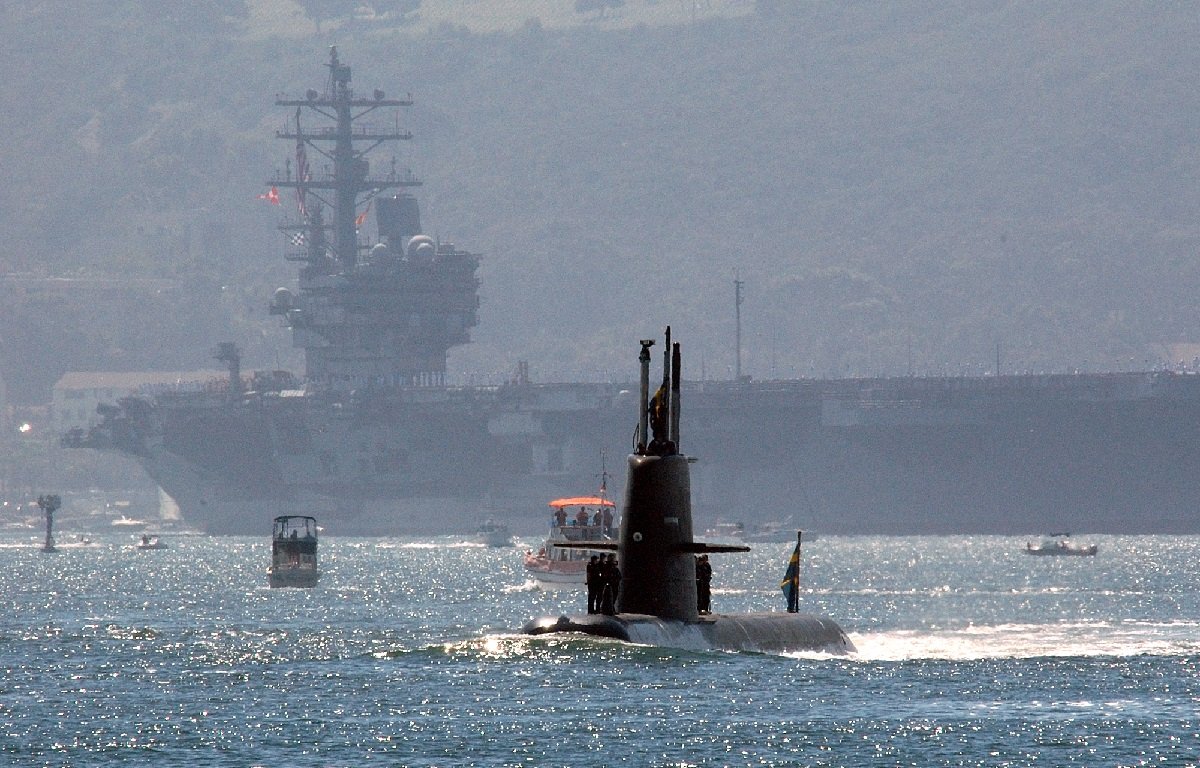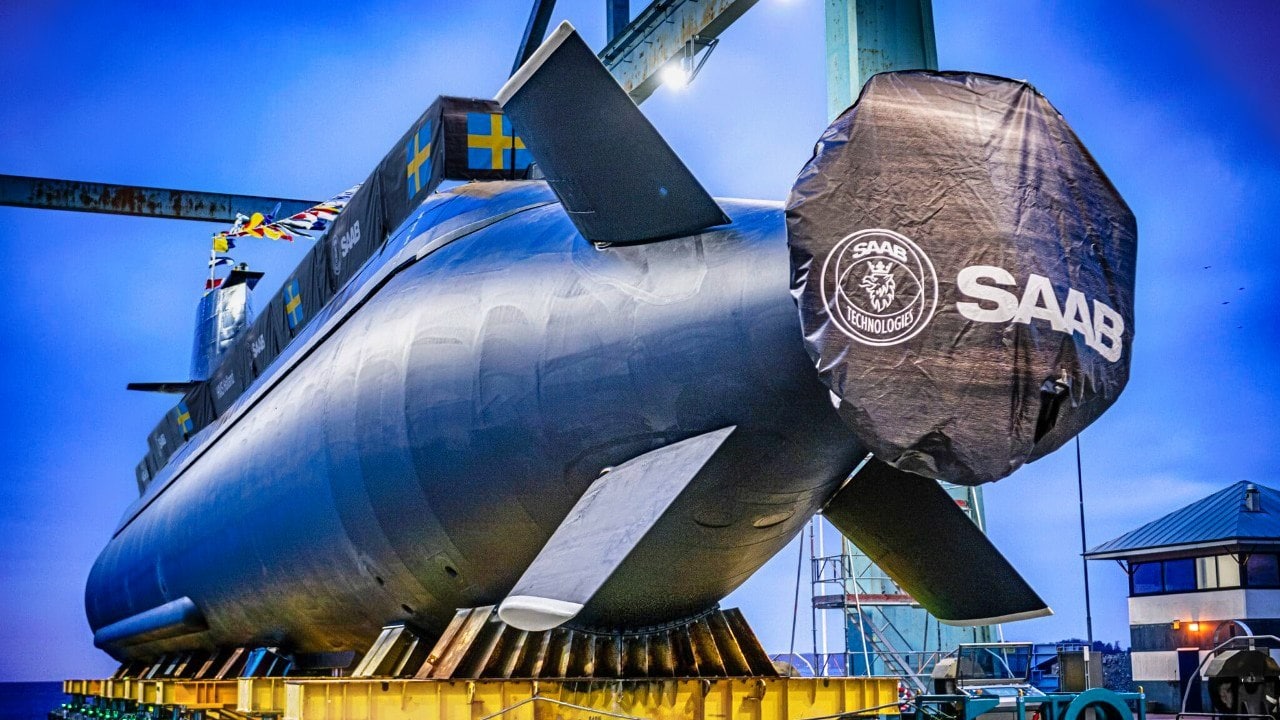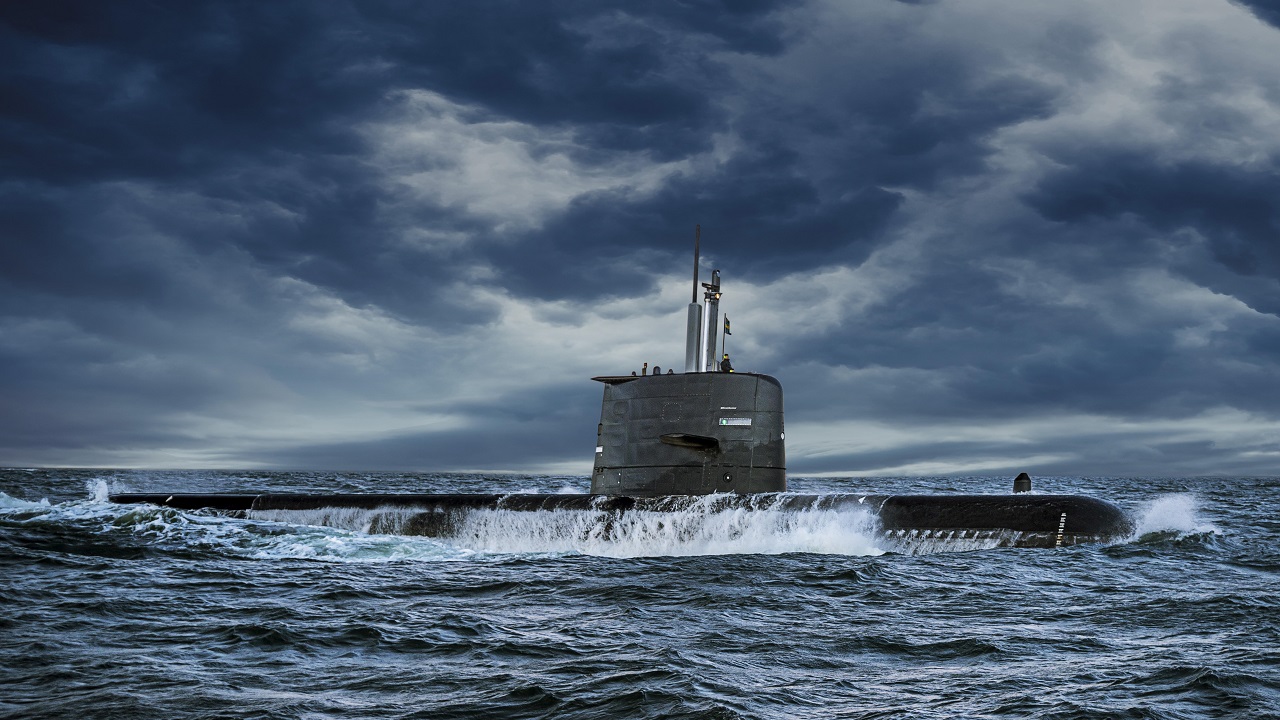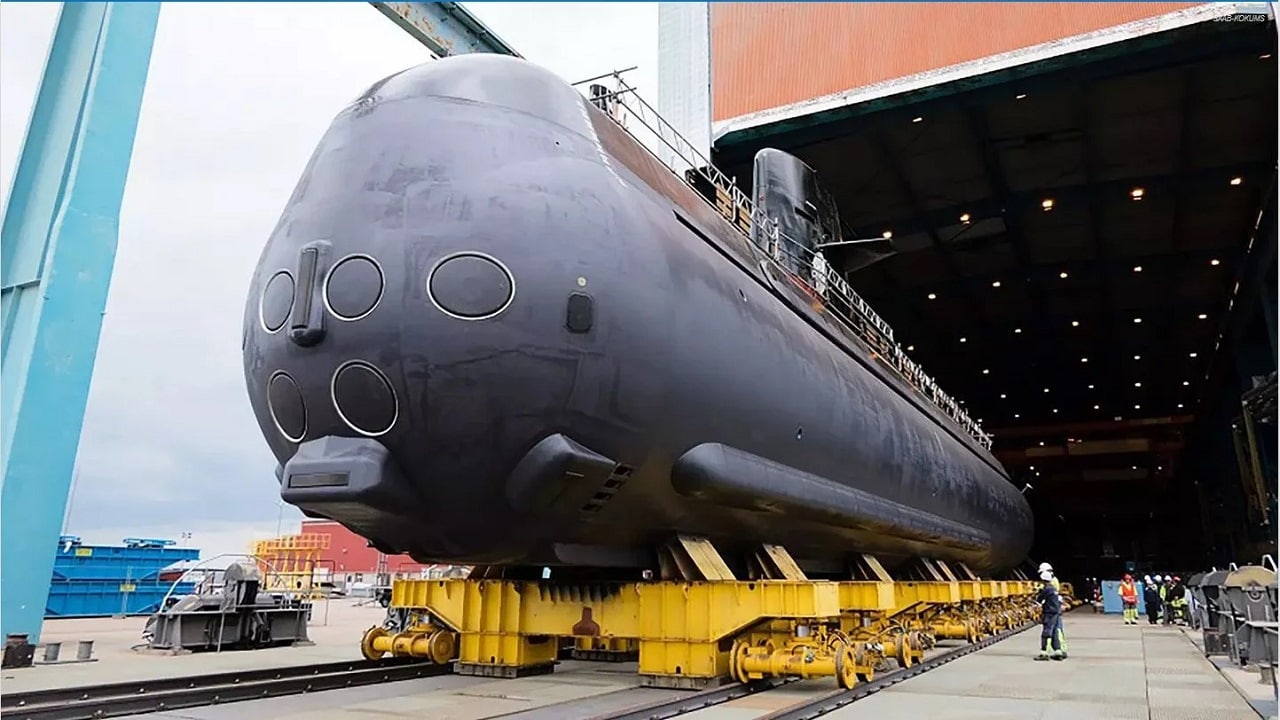Saab, the defense firm behind some of Sweden’s most iconic fighter jet and submarine designs, recently completed a comprehensive mid-life upgrade to the HMS Halland, the third and last of the Gottland-class submarines slated for upgrades. It’s the last component of a deal secured in March 2022 and valued at SEK 1.1 billion, or about 116 million dollars.

051001-N-1722M-355
San Diego (Oct. 1, 2005) Ð The Swedish diesel-powered attack submarine HMS Gotland transits through San Diego Harbor with the Nimitz-class aircraft carrier USS Ronald Reagan (CVN 76) following close behind during the ÒSea and Air ParadeÓ held as part of Fleet Week San Diego 2005. Fleet Week San Diego is a three-week tribute to Southern California-area military members and their families. U.S. Navy photo by PhotographerÕs Mate 1st Class Michael Moriatis (RELEASED)
Saab was cagey, at least in their statement about what precisely the upgrades to the HMS Halland were. “During the modification, more than twenty of the central systems in HMS Halland were replaced, including sensors and command systems,” the company said. It added that “these systems are the same as those that will be used in the Blekinge-class submarines (A26).”
They do say, however, that the mid-life upgrades result in an increase in performance, better stealth capabilities, and better ship control, communications, combat, and navigation abilities.
“Securing critical underwater infrastructure and sea lanes is more important than ever. The launch of HMS Halland is a testament to Saab’s ability to upgrade and deliver advanced submarines with the capabilities the Swedish Navy requires. With HMS Halland, the Swedish Navy, and by extension NATO, is given additional muscle to defend and monitor the Baltic Sea,” says Mats Wicksell, Head of Saab’s Business Area Kockums.
Given the number of high-profile and mysterious cable-cutting incidents in the Baltic, Sweden naturally has an interest in preserving and increasing their capabilities underwater. While at least one of the cable cuttings appears to have been an accident, others are very likely probes or war night shots in the strained Russia-NATO relationship.
Blekinge-class
The Swedish firm explains that some of the technology upgrades going into the Gotland-class are paving the way for the application of similar technology on the upcoming Blekinge-class submarines.
The firm touts its Multi-Mission Portal, a design feature unique to the upcoming Blekinge-class and that allows for the retrieval and launch of both unmanned as well as manned underwater vehicles, judging from company artwork, via the submarine’s front section.
The Blekinge-class, also known as A26, are provisionally represented by two hulls that Saab is building for the Royal Swedish Navy. Powered by diesel-electrification propulsion, they’re also equipped with the Kockum Stirling Air-Independent Propulsion system.
AIP propulsion helps submarines like the Gottland-class and the Blekinge-class stay underwater for protracted periods of time without needing to surface for air to run diesel engines and charge onboard batteries. For an overview of the history and state-of-the-air of Air Independent Propulsion, the U.S. Naval Institute published relevant material.
Silent and Deadly: Gotland-Class Beat a Navy Aircraft Carrier
Sweden’s Saab has a reputation for excellence — and a reputation for being incredibly difficult to detect. Most remarkably, a Gottland-class submarine managed to simulate sinking the USS Ronald Reagan, a U.S. Navy aircraft carrier, during an exercise in 2005.
Leveraging its Air-Independent Propulsion system, the Swedish-manned submarine managed to pierce the layered defenses of a Carrier Strike Group — other submarines, surface ships, and anti-submarine assets in the air — to position itself for firing torpedos at the carrier.

Gotland-Class. Image Credit: Saab.

Gotland-Class. Image Credit: Saab.
The United States Navy was so impressed, or alternatively alarmed, that it ultimately asked the Royal Swedish Navy to lease the submarine and its crew in order to evaluate the small submarine’s capabilities and to improve anti-submarine warfare capabilities, which have seemingly atrophied since the end, of the Cold War and hostilities with the Soviet Union.
With the upcoming Blekinge-class submarines, the Royal Swedish Navy’s offensive capabilities are poised to increase rather significantly.
About the Author: Caleb Larson
Caleb Larson is an American multiformat journalist based in Berlin, Germany. His work covers the intersection of conflict and society, focusing on American foreign policy and European security. He has reported from Germany, Russia, and the United States. Most recently, he covered the war in Ukraine, reporting extensively on the war’s shifting battle lines from Donbas and writing on the war’s civilian and humanitarian toll. Previously, he worked as a Defense Reporter for POLITICO Europe. You can follow his latest work on X.

